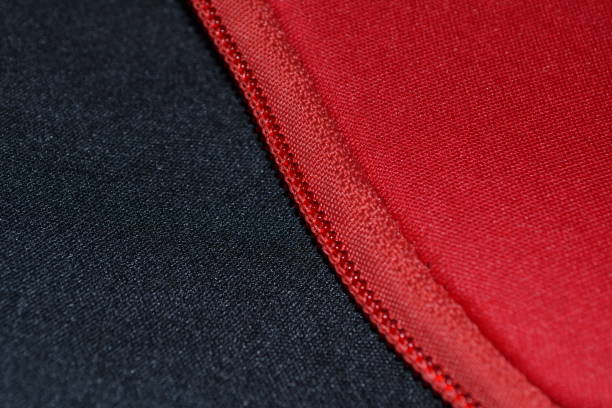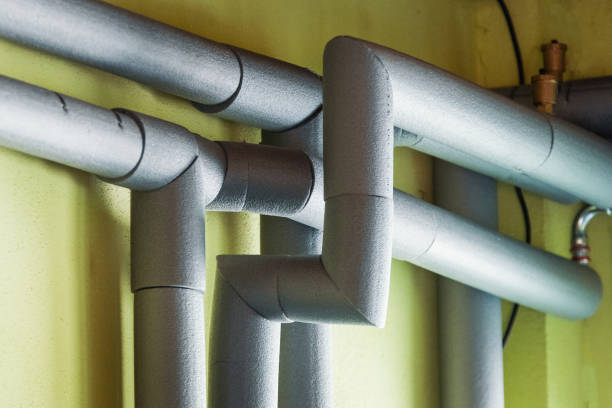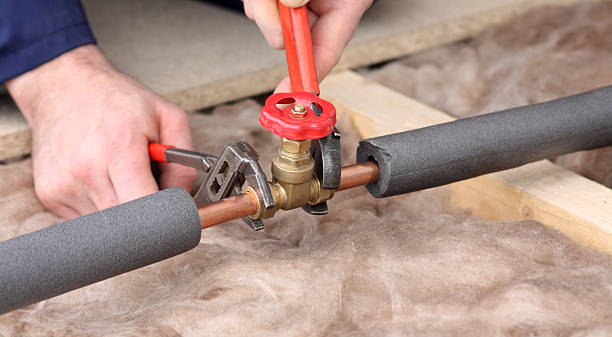Neoprene vs Rubber: Which Material is More Heat Resistant?
Explore the heat resistance of neoprene versus rubber with Funas. This insightful comparison highlights the advantages of each material, helping you make informed decisions for your industrial needs. Understand which provides superior performance under high temperatures, ensuring safety and efficiency. Dive into our expert analysis and discover why choosing the right material matters. Learn more with Funas.
- Importance of Heat Resistance in Materials
- What is Neoprene?
- What is Rubber?
- Types of Rubber with Heat Resistance
- Comparing Heat Resistance: Neoprene vs Rubber
- Heat Resistance in Neoprene
- Heat Resistance in Rubber
- Factors that affect heat resistance in neoprene and rubber
- Which Material is Best for High-Temperature Applications?
- Neoprene vs Rubber: Durability, Flexibility, and Cost
- Conclusion
Importance of Heat Resistance in Materials

One of the most important criteria when choosing materials for industrial or commercial use is heat resistance. Heat-resistant insulation materials used in products guarantee durability and effectiveness of products, especially in areas of fluctuating temperatures. In automotive, construction, or electronic industries, the decision between heat-resistant materials can greatly affect the performance and safety of the product.
Heat resistance is especially crucial for the materials that are applied to seals, gaskets, and insulation. These materials have to be able to withstand stress and temperature changes without degrading. Neoprene and rubber are the two most frequently used materials in such applications, but their heat resistance is different. Knowledge of these differences enables industries to decide which material to use depending on the required temperature and the application.
What is Neoprene?

Neoprene is a type of synthetic rubber that has a high heat resistance quality, among other qualities. It is produced from the polymerization of chloroprene, and it has a variable set of physical characteristics. Neoprene is widely used in areas where the material must be highly resistant to wear and tear and environmental conditions such as temperature. It is also chemically stable and does not degrade easily when exposed to heat, ozone, and chemicals.
Because of its versatility and heat stability, Neoprene is applied in many industries. It is commonly used in wetsuits, hoses, gaskets, and protective coatings where heat is a frequent issue. Unlike some other materials, Neoprene can handle heat ranges of -40°F to 250°F (-40°C to 121°C), which is suitable for both high and low temperature use.
What is Rubber?

Rubber is a natural polymer that is harvested from the latex of rubber trees but can also be man-made from the polymerization of monomers derived from petroleum. Rubber can be classified into many categories depending on the properties that are appropriate for a certain use. In heat resistance, the type of rubber used determines the performance of the rubber under high temperatures.
Types of Rubber with Heat Resistance
- Natural Rubber: Known for its elasticity and durability but not highly heat-resistant, it generally performs well at temperatures up to 180°F (82°C).
- EPDM (Ethylene Propylene Diene Monomer): Excellent for heat resistance, handling temperatures up to 300°F (149°C).
- Silicone Rubber: Performs well at extremely high temperatures, often used in applications exceeding 400°F (204°C).
- Nitrile Rubber: Commonly used in seals, it can tolerate heat up to 250°F (121°C).
These variations in heat tolerance highlight the importance of choosing the right type of rubber for each application.
Comparing Heat Resistance: Neoprene vs Rubber

Heat Resistance in Neoprene
Heat resistance is one of the most important characteristics of Neoprene. It is highly resistant to heat and suitable for a variety of high-temperature applications; it can be used in a temperature range of -40°F to 250°F (-40°C to 121°C). For instance, in automobiles, Neoprene is applied for hoses and seals that are in contact with heat from the car engine. In the same way, it is used in industries as an insulator in equipment that is used in high temperature conditions.
Neoprene is also immune to oxidative degradation, thus making it to have good stability even when used in extreme conditions. This characteristic makes Neoprene have a long durability when used at high temperatures and therefore will be cheaper in the long run. Also, Neoprene is flexible, which means it can be able to perform its functions even when it is expanding and contracting due to changes in temperature.
Heat Resistance in Rubber
Heat resistance of rubber depends on the type of rubber used. Natural rubber has reasonable elasticity but has poor heat resistance; it starts to decompose at temperatures as low as 180°F (82°C). Still, synthetic rubbers such as EPDM and Silicone are much more heat-resistant. For example, EPDM is intended for use at temperatures of up to 300°F (149°C) and is used in automotive gaskets and electrical insulation.
Factors that affect heat resistance in neoprene and rubber
The heat resistance of Neoprene and rubber depends on various factors, as explained below. This is because the composition and additives that are used in the production of these heat-insulating materials at high temperatures are very important. Heat resistance is another feature of Neoprene because of the chloroprene monomers that do not degrade under heat. However, natural rubber does not contain such stabilizing components, and therefore, it is more vulnerable to degradation at high temperatures.
Furthermore, the processing techniques of the materials may also determine the level of heat resistance of the material. For example, Neoprene can be subjected to a curing process to improve its thermal stability while some types of rubber may require the use of some additives to increase heat resistance. This is why some rubber types, including EPDM and silicone rubber, have better high-temperature performance than natural rubber.
Which Material is Best for High-Temperature Applications?
The choice of the material for high-temperature applications is not only based on thermal stability but also on other factors such as mechanical properties, flexibility, and cost. Neoprene is a good all-rounder in heat resistance, chemical stability, and long life and is used in many industries. It is especially useful where moderate to high temperature levels are a regular feature of the working environment.
For more extreme heat conditions Silicone rubber may be more suitable as it can withstand temperatures far in excess of Neoprene. But Neoprene is still used in many mid-range temperature applications because it is readily available, affordable and performs well.
Neoprene vs Rubber: Durability, Flexibility, and Cost

However, heat resistance is not the only difference between Neoprene and rubber, which are used interchangeably in some applications. It is clear that durability, flexibility, and cost are key factors in deciding which material is most suitable for a particular use.
Neoprene has a very good reputation for its durability in extreme conditions. It has good elasticity and can withstand both heat and cold, making it suitable for use in seals, gaskets, and other products that need to flex. On the other hand, flexibility and durability of rubber depend on the type used in the manufacturing of the product. Even though there are other synthetic rubbers such as EPDM and Silicone that have higher heat resistance than Neoprene, they are relatively expensive.
Conclusion
Therefore, rubber is the most suitable material for heat application due to its high performance in various temperatures. Although Neoprene has the advantage of flexibility and chemical resistance rubber, especially EPDM and Silicone rubber, have superior heat resistance, durability and performance at high temperatures. Its high temperature strength makes it the most suitable for essential industrial uses such as seals, gaskets and automotive components.
If you are thinking of high-quality, heat-resistant material, FUNAS is one of the top foam rubber manufacturers that is famous for manufacturing high-quality, flexible, and affordable rubber and foam supplies Contact FUNAS today to learn how rubber can address your business requirements!

Ultimate 2026 Guide to Car Noise Insulation: Silence Your Ride

Ultimate Guide to Rubber Sheets: How to Choose in 2026

Ultimate Guide to Glass Wool: Properties, Uses & Benefits

The Ultimate Guide to Glass Wool Insulation 2026
service
Can I request custom dimensions or properties for my insulation needs?
Yes, we specialize in custom solutions. Whether you need specific dimensions, thicknesses, densities, or additional coatings, we can work with you to manufacture insulation products tailored to your exact requirements of good materials for heat insulation.
What is your shipping and delivery process like?
We offer reliable logistics services for insulation material wholesale, both domestically and internationally. Our team ensures secure packaging, timely shipping, and real-time tracking so that your order reaches you in perfect condition and on schedule.
What types of rubber foam insulation products do you offer?
We offer a wide range of rubber foam insulation products, including custom shapes and sizes, thermal and acoustic insulation solutions, and options with specialized coatings such as flame retardancy and water resistance. Our products are suitable for applications in HVAC, automotive, construction, and more.
FAQ
How do I choose the right insulation for my project?
Our team can help you choose the best material for heat insulation based on your specific needs, such as thermal resistance, acoustic properties, and environmental conditions.
You might also like

Wholesale black Rubber-plastic Board Rubber foam panel sheet

Black Rubber-plastic Tube Rubber foam pipe wholesale

Wholesale Black nitrile rubber foam pipe rubber NBR foam tube rubber foam insulation tube for hvac system

Blue Rubber-plastic Tube Rubber foam pipe wholesale
Leave a message
Have any questions or concerns about our products? Please leave us a message here and our team will get back to you promptly.
Your queries, ideas, and collaboration opportunities are just a click away. Let’s start a conversation.


















































